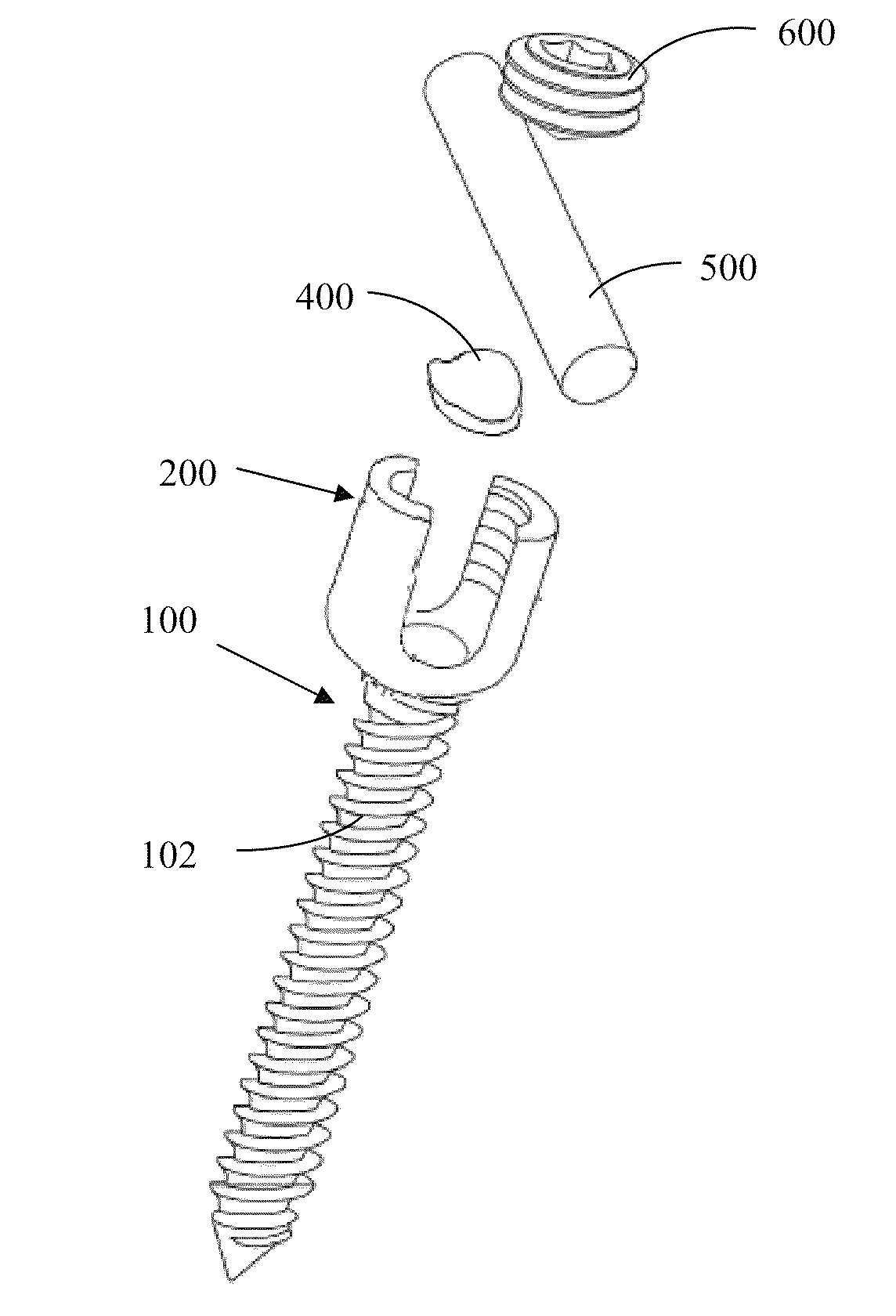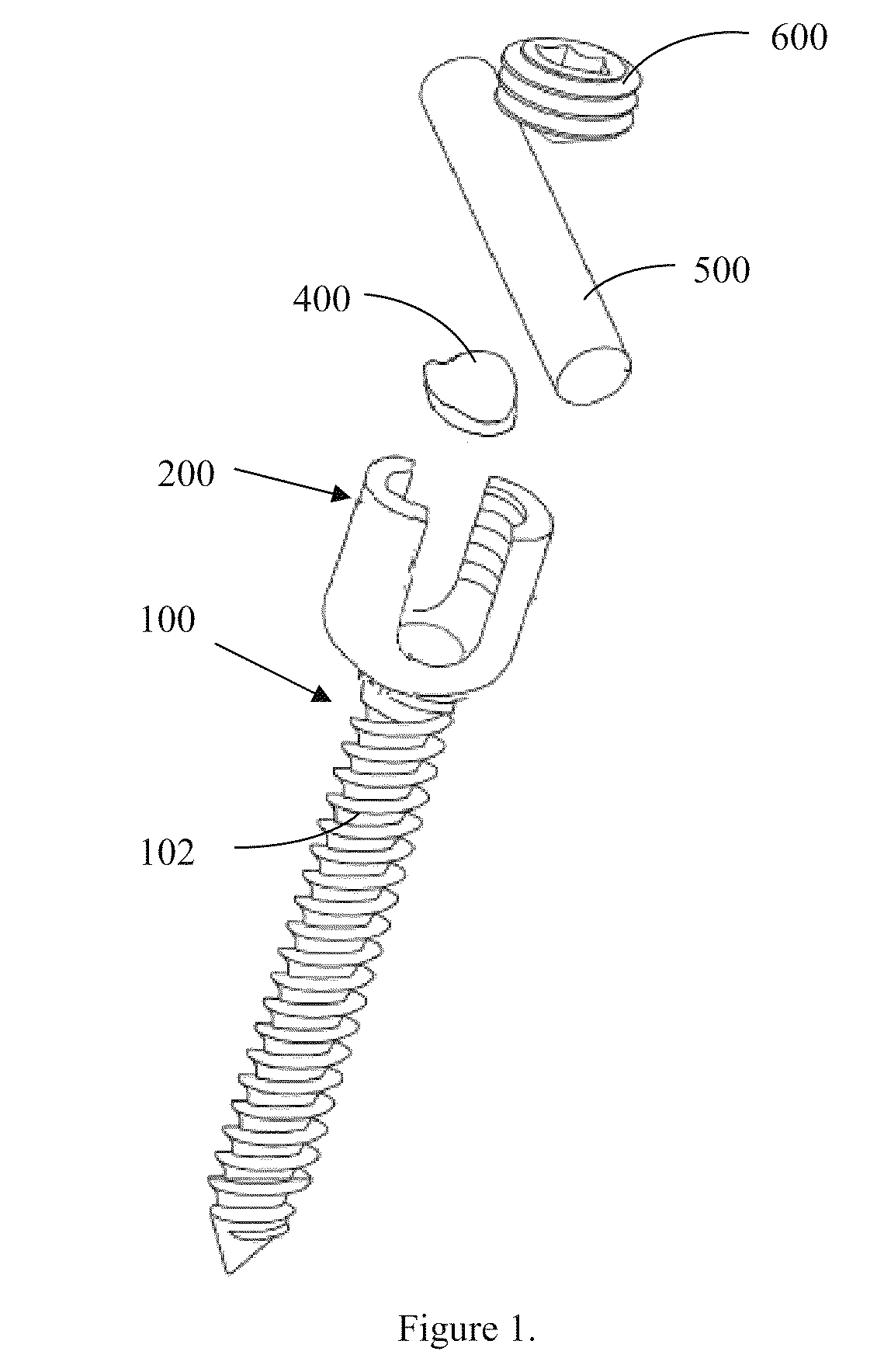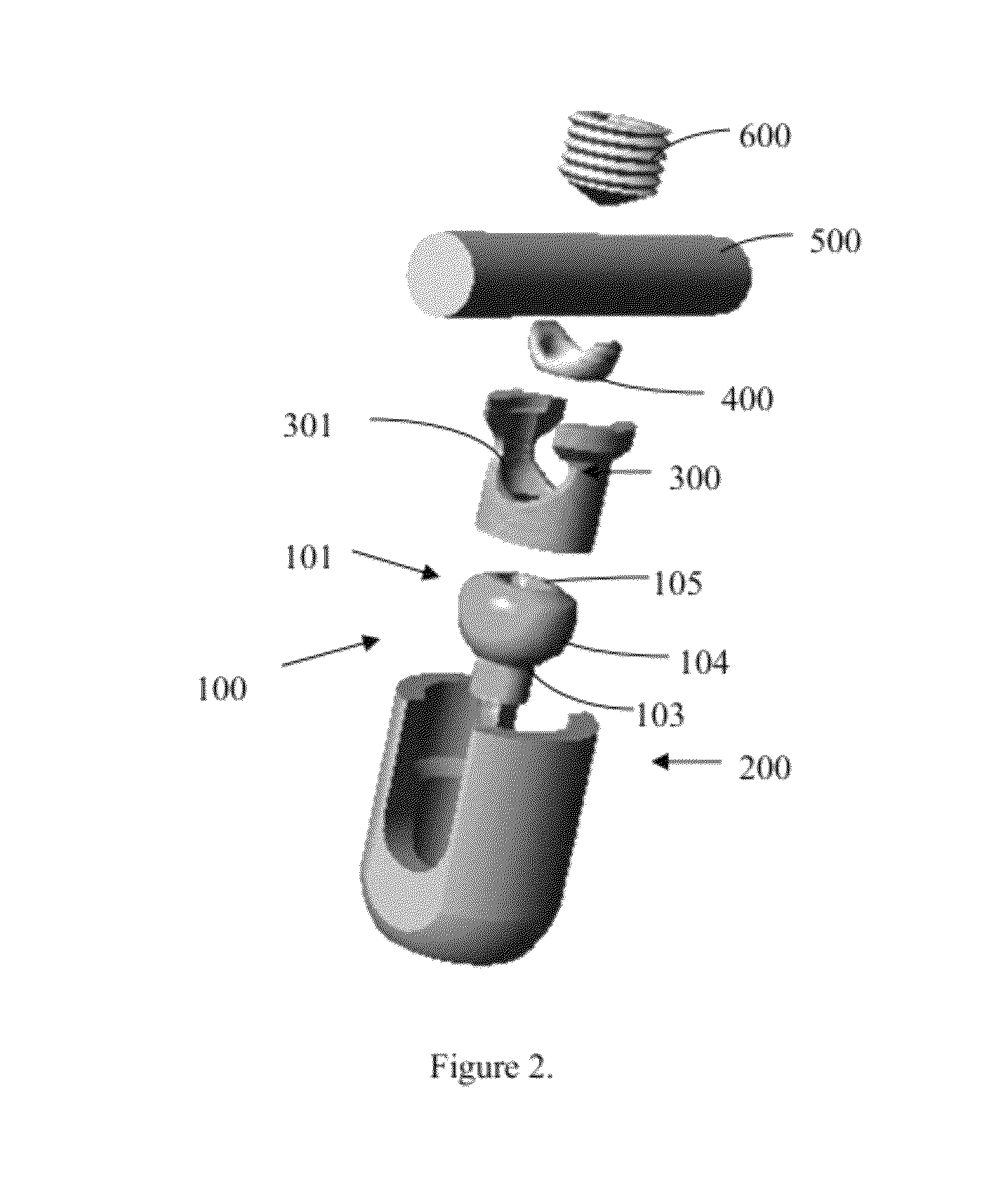Translational manipulation polyaxial screw head
a technology of translaxation and polyaxial screws, which is applied in the field of surgical implantable instruments, can solve the problems of limiting the surgeon's ability to manipulate the vertebral bodies to create sagittal alignment, the failure of conventional top-loading polyaxial screws, and the inability to address cantilever failure. , to achieve the effect of convenient handling
- Summary
- Abstract
- Description
- Claims
- Application Information
AI Technical Summary
Benefits of technology
Problems solved by technology
Method used
Image
Examples
Embodiment Construction
[0025]“Patient” is used to describe an animal, preferably a human, to whom treatment is administered, including prophylactic treatment with the compositions of the present invention.
[0026]“Concave” is used herein to describe an indented surface without reference to the specific shape of the indented surface. As nonlimiting examples, the concave face may be tubular with a round cross section, oval cross section, square cross section, or rectangular cross section.
[0027]“Rod” is used herein to refer to a device used to connect a plurality of bone screws together as is known in the art. This includes, without limiting the definition, rods, cables, bars, and wires.
[0028]“Substantially free” is used to describe the ability of a component to articulate in multiple axis with little interference from the other components of the device. A component may substantially free to pivot if the component may articulate within a range of 60°, preferably 90°, more preferably 120°, or even more preferab...
PUM
 Login to View More
Login to View More Abstract
Description
Claims
Application Information
 Login to View More
Login to View More - R&D
- Intellectual Property
- Life Sciences
- Materials
- Tech Scout
- Unparalleled Data Quality
- Higher Quality Content
- 60% Fewer Hallucinations
Browse by: Latest US Patents, China's latest patents, Technical Efficacy Thesaurus, Application Domain, Technology Topic, Popular Technical Reports.
© 2025 PatSnap. All rights reserved.Legal|Privacy policy|Modern Slavery Act Transparency Statement|Sitemap|About US| Contact US: help@patsnap.com



